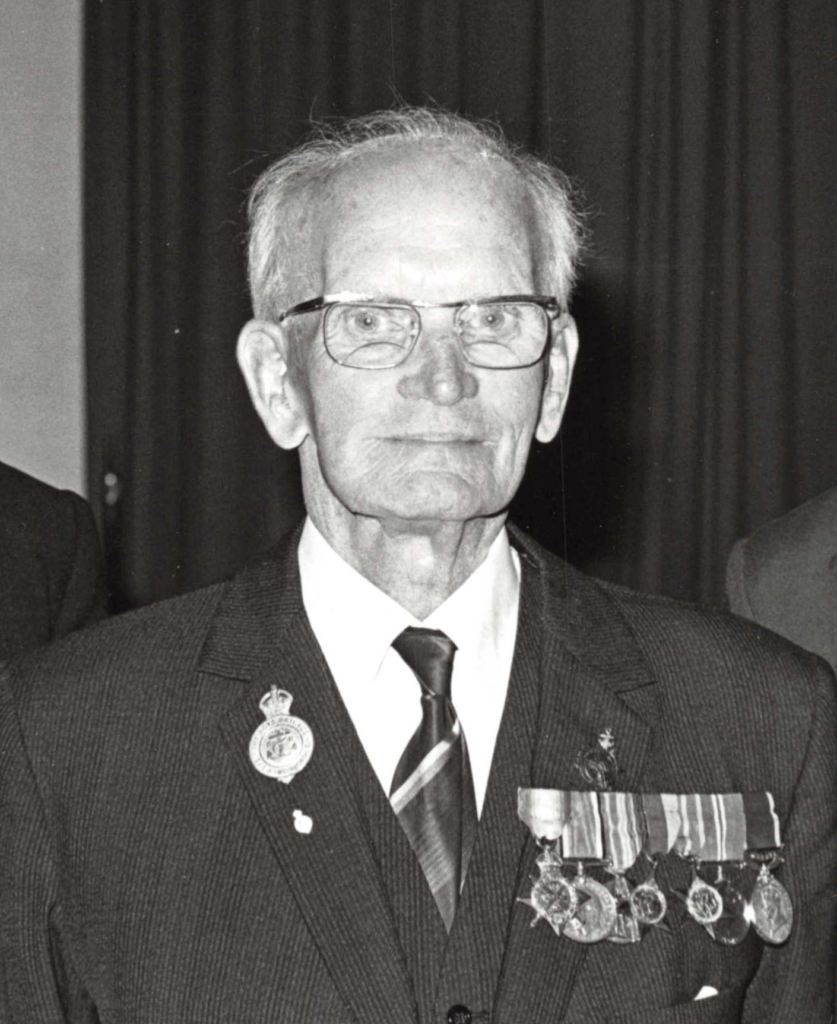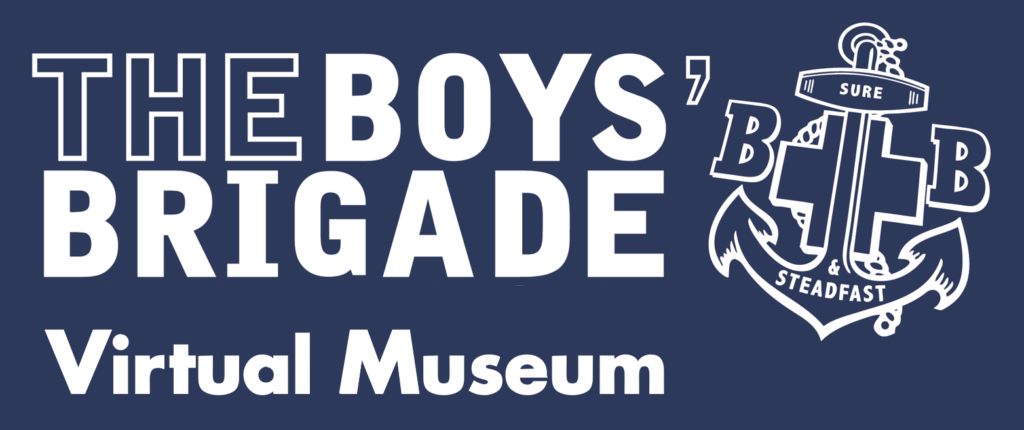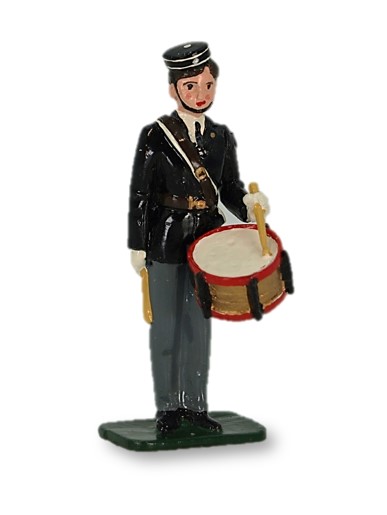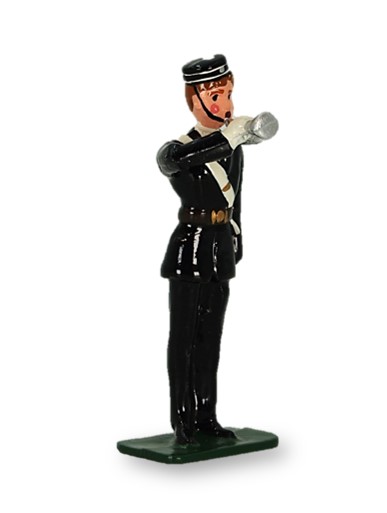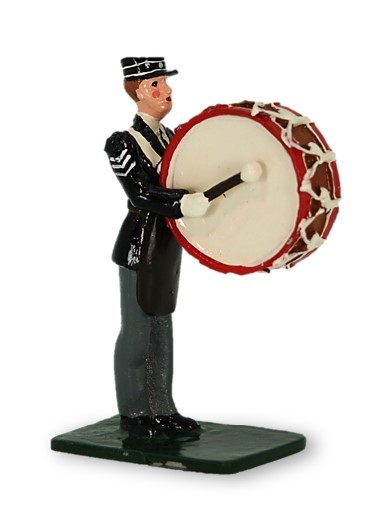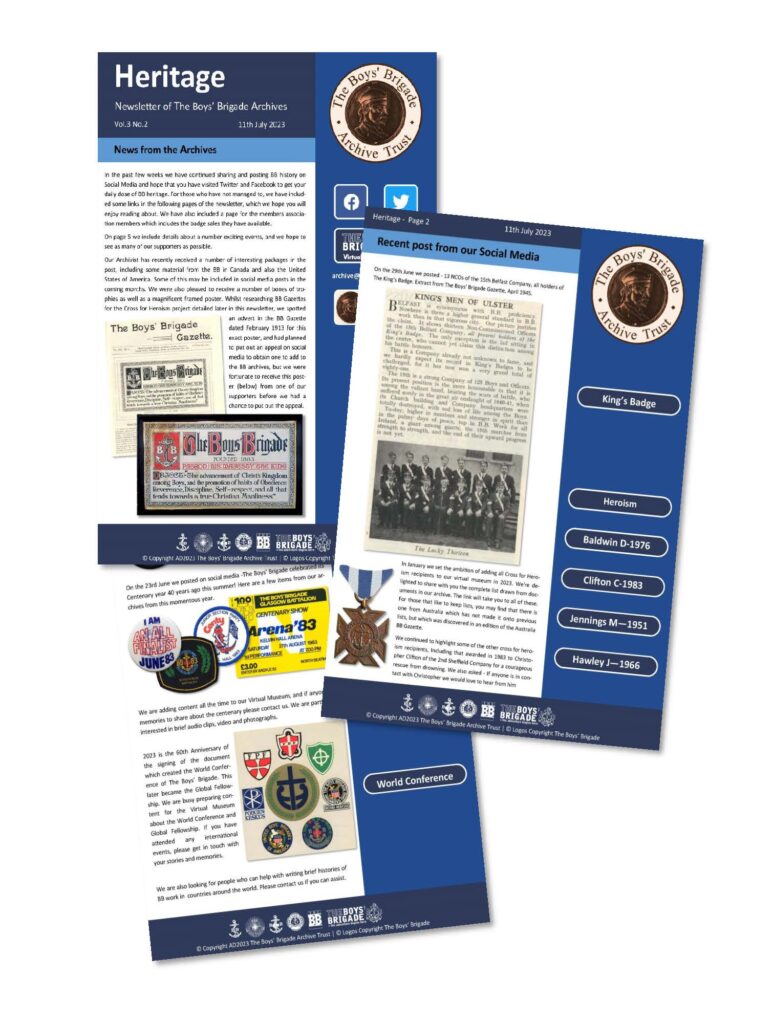1913 – King’s Badge
The Glasgow Battalion Council proposed the award of a King’s Badge in 1913, and shortly after the Brigade Executive applied to the King for permission. Introduced in September 1913, and named with permission of the Monarch, the award grouped the physical and educational attainments of the increasing badge structure in The Boys’ Brigade. The conditions for the new badge were agreed at the Executive meeting in Liverpool, with the formal announcement of the badge in October 1913 stating that it would be worn on the left arm between shoulder and elbow. The Scouts’ Badge would now be worn on the right arm. A sample of the proposed badge was shown to King George V in March 1914 for approval, before a picture of the new award appeared for the first time when the Gazette stated that: ‘…The Badge is silver-plated and forms a very beautiful decoration…
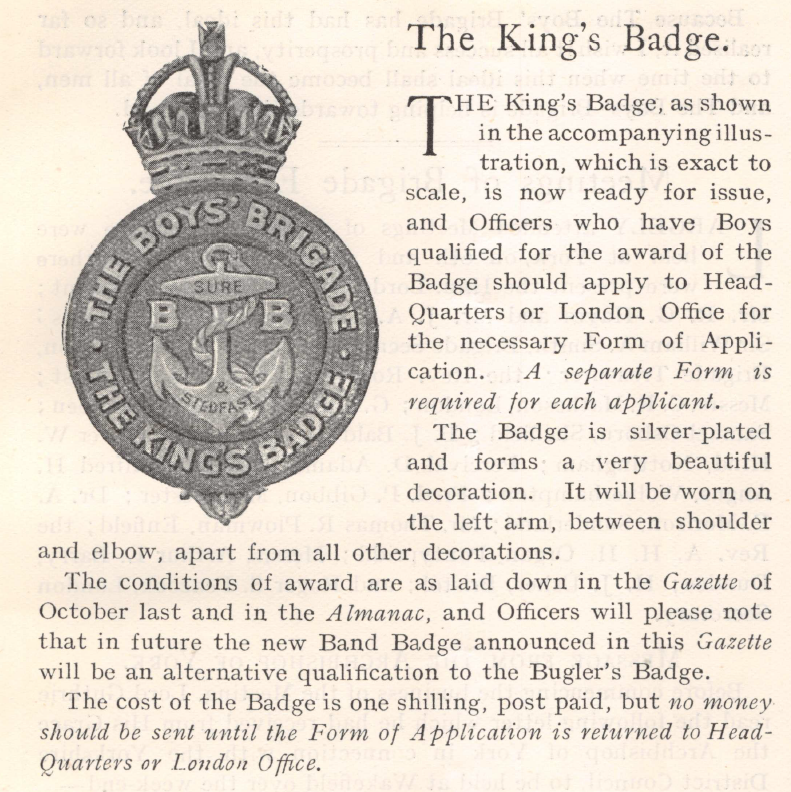
The conditions for the award were laid out in the Manual of 1914;
To be worn when in uniform, on the left arm, between shoulder and elbow, apart from all other Decorations. The applicant must be recommended by his own Company Captain as suitable, and must be not less than 16 years of age in the Session in which the application is made. He must have served for three complete Sessions with good conduct and be of Non-Commissioned rank. He must have at least 90 per cent, of full attendance marks during the above period at not less than 25 Meetings each for- (a) Drill, and (b) Bible-Class or Sunday School.
He must hold a Non-Commissioned Officers’ Certificate of Proficiency obtained after Examination. He must hold at least two out of the following four:- (a) First and Second year’s Ambulance Certificates, (b) First-Class Swimming Certificate, (c) First-Class B.B. Scout’s Certificate, (d) Signaller’s, Bugler’s, or Band Badge. Application Forms for this Badge (which is supplied at 1s. post paid) may be had from Head-Quarters or London Office. Service as Staff- Sergeant does not count for the King’s Badge.
In 1914 the very first awards of the King’s Badge were made to Sgt. A. Reid (1st Glasgow) and Sgt. F. Sturch (1st Warley)
Known as ‘The Queen’s Badge’ since 1953, it remains the highest award in the Brigade and indicates a sustained commitment to the B.B.
In 2013 The Boys Brigade issued a commemorative badge celebrating the centenary of The King’s Badge.
Media Files
Audio
1st King's Badge
